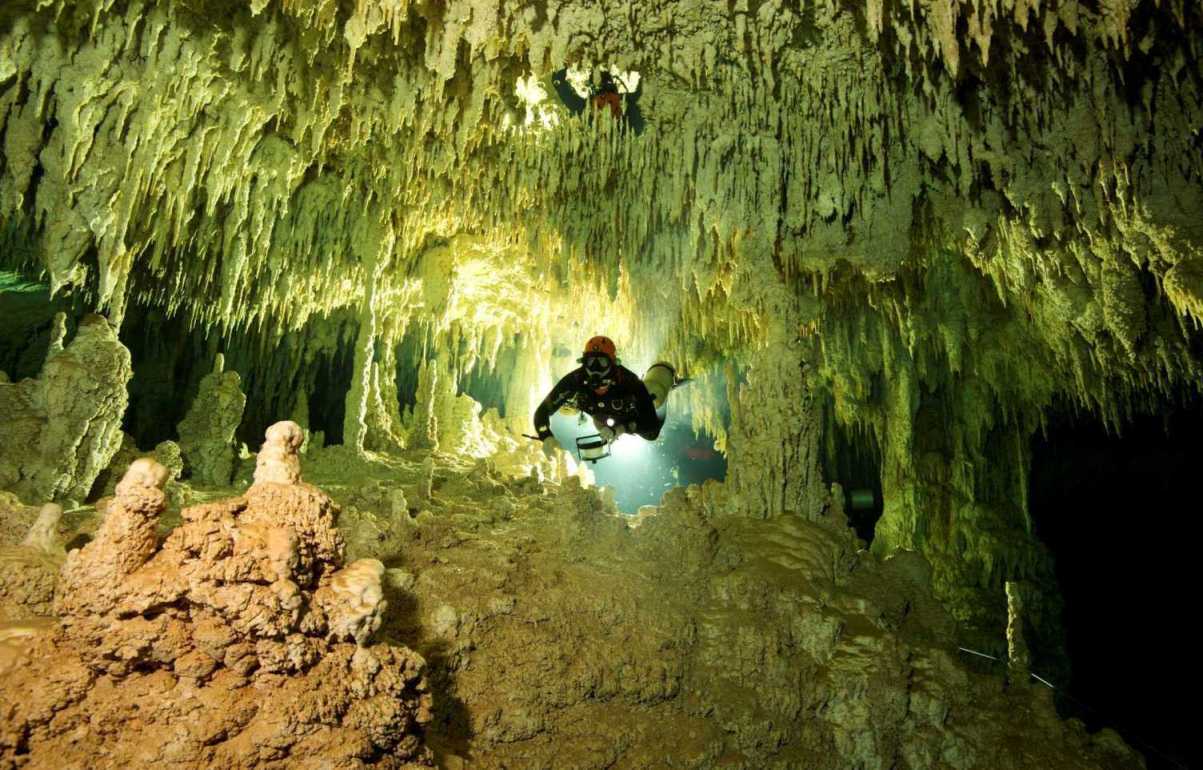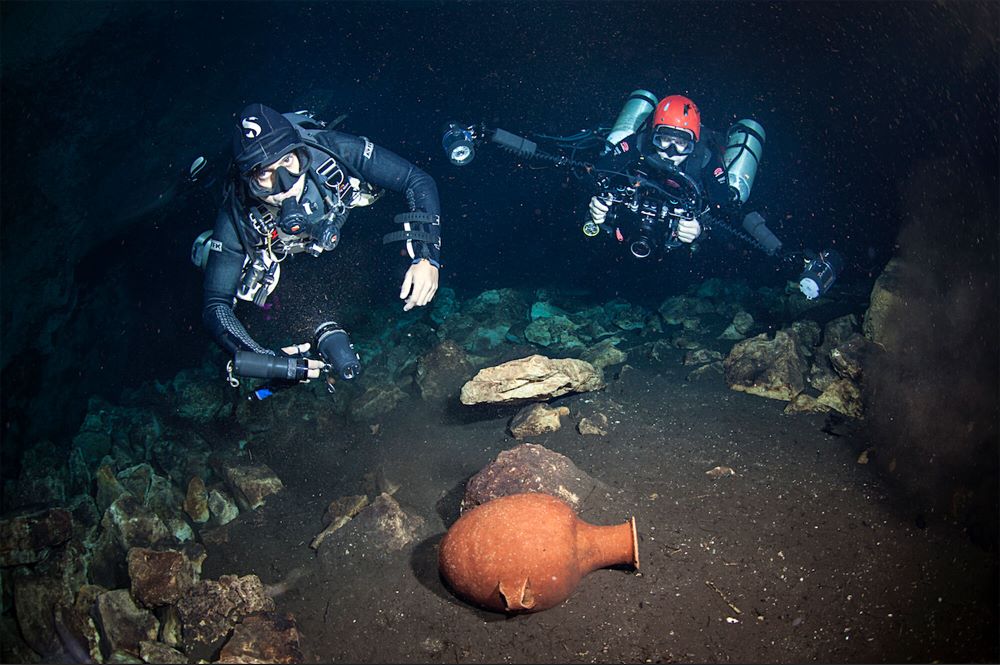After 10 months of intensive work, the underwater exploration group of the Great Maya Aquifer Project (GAM) recently made a groundbreaking discovery – the world’s largest known underwater cave. Stretching an astonishing 215 miles (347 kilometers) in length, this remarkable find has captivated the attention of explorers and archaeologists worldwide.

A Natural Wonder with Archaeological Significance
The cave, composed of two massive underwater cavern systems named Sac Actun and Dos Ojos, is nestled in Mexico’s enchanting Yucatán Peninsula. Beyond its breathtaking beauty, this underwater marvel holds immense archaeological importance. Hidden within its depths are hundreds of archaeological sites that have the potential to unveil long-lost secrets of America’s first settlers, the ancient Mayan culture, and even extinct animal species.
According to esteemed underwater archaeologist Guillermo de Anda from Mexico’s National Institute of Anthropology and History (INAH), this colossal cave represents the most significant submerged archaeological site in the world. With over a hundred archaeological contexts discovered so far, it offers a glimpse into the lives of early humans, extinct fauna, and the rich heritage of the Mayan civilization.
Video
A Gateway to the Past
The underwater cave acts as a time capsule, transporting explorers and researchers to a bygone era. By examining the remains of extinct fauna, early human artifacts, Maya archaeology, ceramics, and even Maya graves, experts have the opportunity to delve deep into history. These discoveries paint a vivid picture of life 10,000 to 12,000 years ago, providing invaluable insights into the ancient world.

Continuing the Exploration
The excitement surrounding the world’s largest underwater cave doesn’t end with its initial discovery. Researchers are currently focused on investigating three additional underwater cave systems in close proximity. These explorations hold the promise of expanding the already vast cave labyrinth, potentially revealing even more archaeological wonders and shedding further light on the mysteries of the Mayan civilization.
In addition to its archaeological significance, the enormous cave also boasts a significant freshwater reserve that sustains a diverse range of aquatic life. Explorers are undertaking comprehensive studies to better understand the unique underwater biodiversity thriving within this hidden realm.
The discovery of the world’s largest underwater cave has opened a gateway to the past, providing an unprecedented opportunity to unravel the secrets of the Mayan civilization. As researchers dive deeper into the depths of this remarkable subaquatic landscape, it is certain that more astonishing revelations are yet to come.


